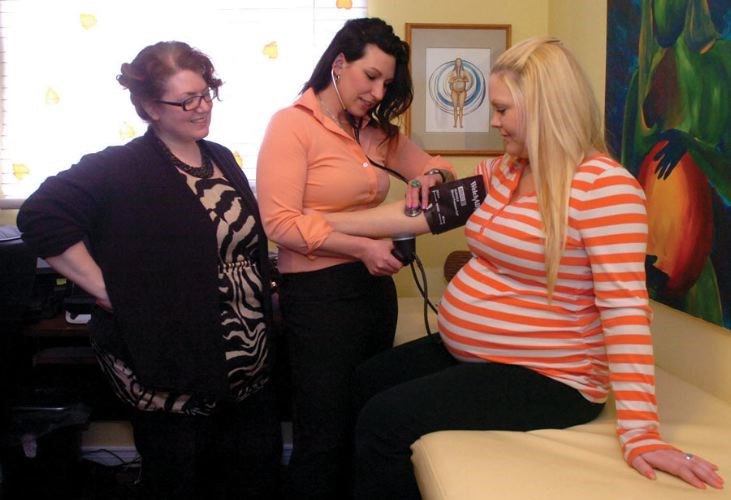The five Prince George-based midwives are so busy that as many as a dozen women per month can't receive their preferred method of childbirth care.
Sarah Hilbert-West hates having to turn away potential clients but it happens all the time.
"The thing that brought me to midwifery is the idea of informed choice and that we are able - through our compensation system - to take more time with women so that we're giving them all the information to support their own decision making," Hilbert-West said.
But with consistently full caseloads, Hilbert-West and other local midwives are unable to provide all women with that choice. To help attract more midwives to the region, Hilbert-West would like to take a page from the physician recruitment book and begin training the maternity specialists closer to home.
"I think the key is educating midwives locally," she said. "I would hope looking long term that [UNBC] will be able to partner with UBC to provide a satellite midwifery program."
Currently UBC's four-year program is the only place in the province offering education in midwifery.
"I would love to be able to support midwives being taught in the north, trained in the north to stay in the north," Hilbert-West said.
The situation isn't unique to Prince George.
Last month, the Midwives Association of British Columbia released a new vision for the profession, which calls for a large jump in the number of people becoming trained as midwives so that the number of midwife-supported births can increase from 17 per cent in the province to 35 per cent by 2020.
The midwives association has identified a provincial gap in maternity care services, which it predicts will only grow as more physicians from the baby boomer generation retire and some family doctors decide not to offer maternity care.
"Midwifery is part of the solution, but like any other health profession, midwifery can't solve it alone," midwives association executive director Ganga Jolicoeur said. "If we're going to address the maternity care gap in British Columbia, we have to do it in a collaborative and co-operative manner with all the related agencies."
The association's vision document points out that the medical outcomes for babies born under the care of midwife are very good and the cost to the medical system is lower because there are fewer C-sections and on average mothers stay in hospital less time then when under a physician's care. Since midwives provide six weeks worth of postpartum followup care, Jolicoeur said that also helps reduce the number of times a mother or baby needs to visit the hospital after a birth.
Midwives also provide families with the option of home births, which Hilbert-West said helps reduce stress on the maternity ward at hospitals including UHNBC.
"Sometimes we'll call into the [maternity] unit to report we have a home birth in progress and they'll say, 'thanks, because we're full,' " she said. "The home birth rate does take a lot of pressure off the maternity unit and if those women weren't having deliveries at home, I think people would be delivering in the hall."
In addition to educating more midwives, the association is urging the province to fund a program so that foreign-trained midwives can gain credentials to practice in B.C.
Jolicoeur also wants to reduce the barriers that exist to midwives setting up for the first time in rural communities. Hilbert-West learned that first hand when she began to introduce the practice in her hometown of Quesnel.
She said it required educating a lot of people both in and out of the medical community about what a midwife does and what their scope of practice is all about.
In Prince George, the local midwives have developed excellent relationships with nurses, physicians and health administers. There is even an water birthing room midwives use at UHNBC, which Hilbert-West said is a rarity in the province.
"In Prince George it's incredibly well integrated and the midwives that have been here for a while have worked very hard to do that integration," she said. "It definitely goes through growing pains when its a newer profession."
Many rural communities in the north don't have any maternity care from either midwives or physicians, which mean women have to travel long distances and sometimes have to leave weeks before their due date. By attracting more midwives to those rural communities, the association hopes more women can get care close to home.
"The next step will be communities like Williams Lake and other communities as we spread out throughout the north," Hilbert-West said.
In some rural communities, Jolicoeur said it could be beneficial to expand the scope of midwifery care so that they're able to provide women's health services outside of pregnancy.
"Not every community has the required infrastructure for maternity care to be brought back into the community, but many do," Jolicoeur said. "We're trying to focus our efforts on those communities that have the available supports in place to provide safe care."



